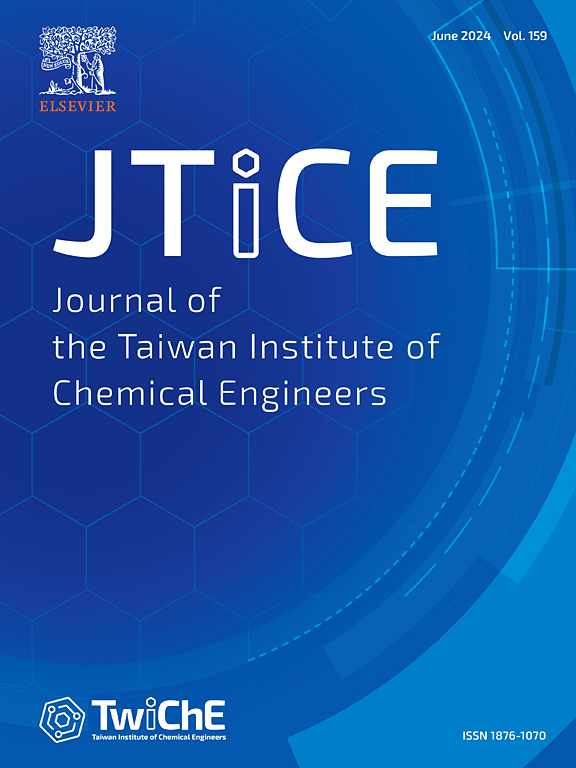通过数值模拟研究污泥密度和粘度对污水处理中连续搅拌罐反应器性能的影响
IF 5.5
3区 工程技术
Q1 ENGINEERING, CHEMICAL
Journal of the Taiwan Institute of Chemical Engineers
Pub Date : 2025-01-01
DOI:10.1016/j.jtice.2024.105368
引用次数: 0
摘要
本文章由计算机程序翻译,如有差异,请以英文原文为准。

Impact of sludge density and viscosity on continuous stirred tank reactor performance in wastewater treatment by numerical modelling
Background
Wastewater treatment is crucial for maintaining a sustainable environment and managing water resources. Unprocessed wastewater contains pollutants that damage ecosystems and trigger eutrophication. The continuous stirred tank reactor plays a pivotal role in wastewater treatment due to its effective mixing, stability, and versatility. In this study, a multiphase CSTR model was developed using a numerical scheme.
Methods
The Reynolds-Averaged Navier-Stokes model was utilized for turbulence, considering two phases: water-liquid as the primary phase (Phase-1) and sludge as the secondary phase (Phase-2). Computational fluid dynamics facilitated the creation of an Eulerian model using a dispersed particle distribution approach. Four CSTR variations were explored by altering sludge density, ranging from 1200 kg/m³ to 1400 kg/m³.
Significant Findings
Adaptive mesh refinement improved result reliability and sludge dispersion near the tank walls. Mesh refinement near to the impeller is high to capture the vortices magnitude and the turbulence kinetic energy. The study highlights the pivotal role of the relationship between wastewater and microorganisms in effective treatment. Optimizing sludge density and viscosity enhances CSTR mixing efficiency. High sludge density contributes to dead zone formation within the CSTR, while increased viscosity affects overall performance. Increasing the sludge density affects the turbulent viscosity of the operating fluids. Added to above, there is significant change in the velocity distribution for the phase 2. Insights from this research contribute to understanding CSTR performance linked to impeller speed, sludge density, and viscosity for sludge of the wastewater.
求助全文
通过发布文献求助,成功后即可免费获取论文全文。
去求助
来源期刊
CiteScore
9.10
自引率
14.00%
发文量
362
审稿时长
35 days
期刊介绍:
Journal of the Taiwan Institute of Chemical Engineers (formerly known as Journal of the Chinese Institute of Chemical Engineers) publishes original works, from fundamental principles to practical applications, in the broad field of chemical engineering with special focus on three aspects: Chemical and Biomolecular Science and Technology, Energy and Environmental Science and Technology, and Materials Science and Technology. Authors should choose for their manuscript an appropriate aspect section and a few related classifications when submitting to the journal online.

 求助内容:
求助内容: 应助结果提醒方式:
应助结果提醒方式:


